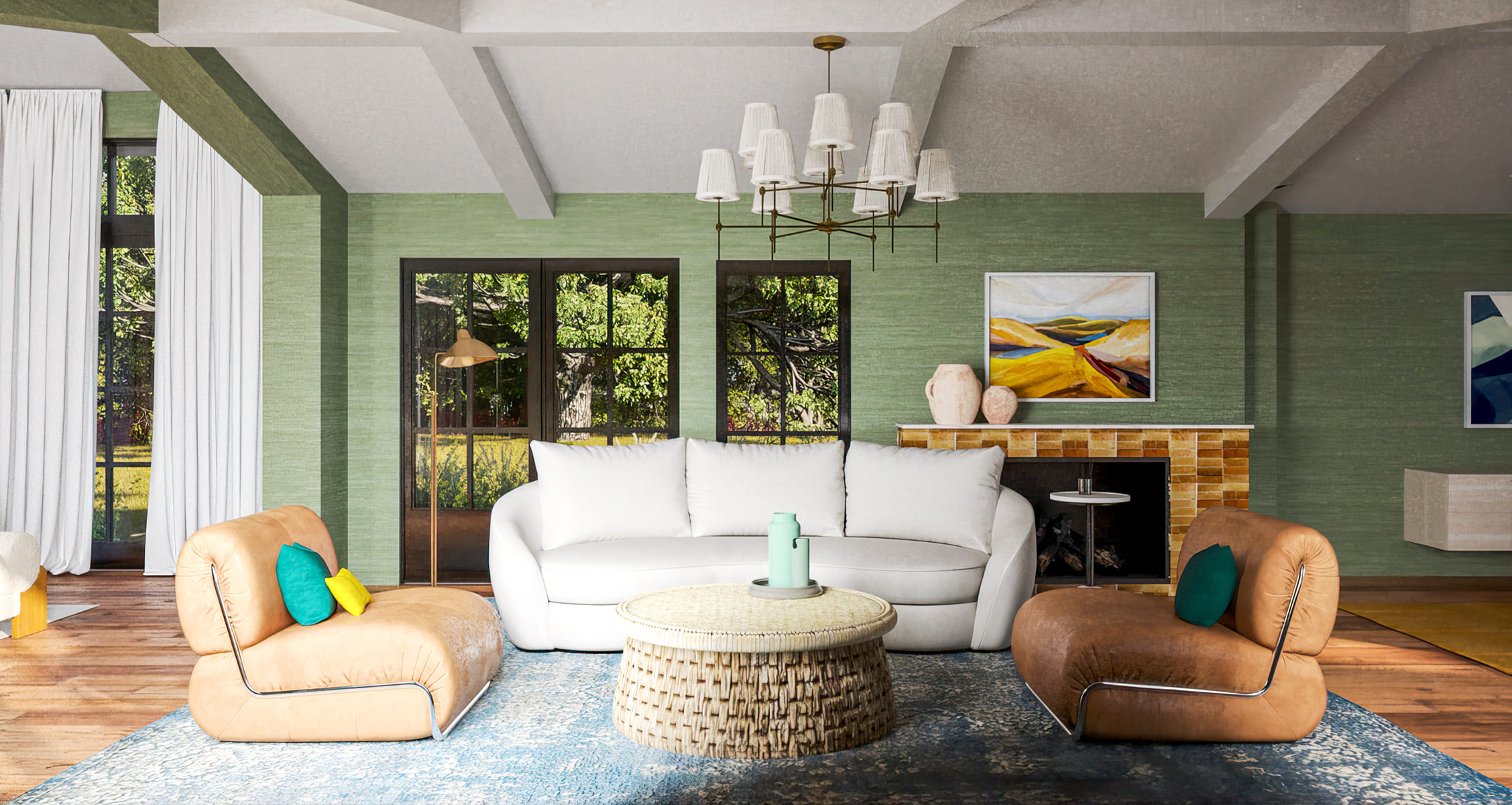Elevating eCommerce with Advanced 3D Product Rendering
In the rapidly evolving landscape of online retail, the integration of 3D rendering product visuals has marked a significant leap forward, transforming how consumers interact with products in the digital realm. This article delves into the nuanced world of 3D product rendering within eCommerce, exploring its foundational role in enhancing online shopping experiences and its profound impact on consumer engagement and trust. Through a detailed examination of the technology's application and its effects on consumer behavior, we aim to provide a comprehensive insight into the transformative power of 3D Rendering in eCommerce.
Introduction to 3D Product Rendering in eCommerce
The advent of 3D product rendering in eCommerce represents a paradigm shift from traditional two-dimensional images to dynamic, interactive 3D visuals. This technology allows consumers to explore products from every angle, delve into intricate details, and customize features according to their preferences, all within the comfort of their digital devices. The essence of 3D Rendering lies in its ability to create highly realistic and detailed digital representations of products, leveraging advanced software and computing power to simulate textures, lighting, and physical properties with astonishing accuracy.

Image from Yousee Studio
The significance of this technological advancement extends beyond mere visual appeal. It addresses several inherent limitations of online shopping, such as the inability to physically examine products, by providing a virtual yet palpable experience of the product. For instance, furniture retailers like IKEA have harnessed 3D Rendering to allow customers to visualize how a piece of furniture would fit and look in their own space, effectively bridging the gap between imagination and reality.
The Impact of 3D Rendering on Consumer Experience
Enhancing Product Understanding through Interactive Visuals
One of the most significant impacts of 3D Rendering on the consumer experience is the enhanced understanding of the products it facilitates. Traditional 2D images, while helpful, offer a limited perspective, often leaving consumers with questions about the product's look and feel from different angles. 3D renderings, on the other hand, provide a comprehensive view of the product, enabling consumers to rotate, zoom, and interact with the product virtually. This interactive experience enriches the consumer's understanding of the product and empowers them to make informed purchasing decisions.
For example, in online apparel retail, 3D renderings allow consumers to see how a garment drapes, moves, and fits from every angle, simulating the experience of examining the garment in person. This level of detail and interactivity significantly reduces the ambiguity often associated with online apparel shopping, leading to higher satisfaction rates and reducing the likelihood of returns.
Building Consumer Trust with High-Fidelity Representations
Trust is a critical component of the consumer-retailer relationship, especially in the online shopping environment where physical interaction with the product is absent. High-fidelity 3D renderings are pivotal in building this trust by providing accurate and detailed representations of products. When consumers can explore a product in detail and from all angles, their confidence in the product and the retailer increases, fostering a sense of reliability and transparency.
Moreover, the realism afforded by advanced 3D rendering techniques, such as photorealistic texturing and lighting, ensures that the digital representation closely matches the physical product. This accuracy is crucial in minimizing discrepancies between consumer expectations and the actual product, a common challenge in online retail that often leads to dissatisfaction and returns. Presenting products in a true-to-life manner, 3D renderings help align consumer expectations with reality, enhancing trust and loyalty towards the brand.
Integrating 3D product rendering in eCommerce is not merely a technological trend but a fundamental shift in how products are presented and experienced online. By offering interactive and highly detailed visuals, 3D Rendering enriches the consumer experience, fostering a deeper understanding of products and building trust in the digital marketplace. As this technology continues to evolve and become more accessible, its role in shaping the future of eCommerce is poised to expand, promising even more immersive and engaging online shopping experiences.
Technological Innovations Driving 3D Product Rendering
The landscape of 3D product rendering is continually reshaped by technological innovations that push the boundaries of what's possible in digital visualization. These advancements enhance the quality and realism of 3D renderings and make this technology more accessible and efficient for eCommerce platforms.
Latest Advancements in 3D Rendering Software and Hardware
At the core of these innovations are the developments in 3D rendering software, such as Autodesk 3ds Max, Maya, Blender, and more specialized tools like KeyShot and V-Ray. These software solutions have evolved to offer features that significantly reduce the time and effort required to create photorealistic renderings. For instance, once a distant dream, real-time rendering capabilities are now becoming standard, allowing designers to see their work come to life instantaneously. This real-time feedback accelerates the creative process, enabling rapid iterations and adjustments without the lengthy wait times traditionally associated with high-quality renders.

Image from Yousee Studio
Moreover, the hardware that powers 3D Rendering has seen substantial advancements. The latest GPUs from companies like NVIDIA and AMD are specifically designed to handle the intensive computational demands of 3D Rendering, offering capabilities such as ray tracing, which simulates the physical behavior of light to achieve real-life lighting effects in renderings. Additionally, the advent of cloud computing has democratized access to high-performance Rendering. Cloud-based rendering farms allow even small eCommerce businesses to leverage massive computing power on a pay-per-use basis, eliminating the need for costly in-house hardware.
Integration of AR/VR for Immersive Shopping Experiences
Another significant technological innovation transforming 3D product rendering in e-commerce is the integration of Augmented Reality (AR) and Virtual Reality (VR). These technologies take 3D renderings from static images to immersive experiences, allowing customers to visualize products in their own space (AR) or enter an entirely virtual environment (VR) where they can interact with products lifelike.
For example, AR apps in furniture and home decor retail enable customers to see how a piece of furniture would look and fit in their living spaces directly from their smartphones or tablets. This application of 3D Rendering significantly enhances the online shopping experience, providing a tangible sense of scale, design, and compatibility that static images cannot convey.
Implementing 3D Rendering in eCommerce Platforms
Integrating 3D Rendering into e-commerce platforms represents a convergence of technology and commerce, offering a more dynamic and interactive shopping experience. However, implementing this technology comes with its own set of challenges and considerations.
Best Practices for Integrating 3D Models into Online Stores
One of the key considerations in implementing 3D Rendering is the user experience. eCommerce platforms must ensure that 3D visuals are seamlessly integrated into the online shopping environment, providing intuitive controls for users to interact with the products. This might include zoom, rotate, and color or configuration changes, all of which should be easily accessible and responsive to ensure a positive user experience.
Furthermore, it's crucial to maintain website performance and loading times, as high-resolution 3D models can be data-intensive. Techniques such as progressive loading, where a low-resolution model is initially presented and gradually increased in detail, can help mitigate this issue. Additionally, leveraging browser-based 3D rendering technologies like WebGL allows for smooth, plugin-free 3D experiences directly in a user's web browser.
Overcoming Challenges in Adoption and Scalability
Adopting 3D rendering technology in eCommerce also involves overcoming scalability and the initial setup challenges. Creating 3D models for extensive inventories can be resource-intensive, requiring skilled 3D artists and significant time investment. One solution to this challenge is photogrammetry and 3D scanning technologies, which can automate the creation of 3D models from physical products, significantly reducing the time and cost involved.
Moreover, as eCommerce platforms scale, managing an extensive library of 3D models and ensuring they are up-to-date with product changes becomes a logistical challenge. A robust digital asset management system is essential for efficiently storing, categorizing, and updating 3D models. Such a system ensures that the latest and most accurate models are always available on the eCommerce platform, maintaining consistency and reliability in the customer experience.
Conclusion: The Competitive Edge of 3D Rendering in Retail
Integrating 3D Rendering into the retail sector, particularly within e-commerce platforms, has unequivocally redefined online shopping and product presentation paradigms. This transformative technology has not only elevated the visual standard of product representation. Still, it has also significantly enhanced the consumer shopping experience, fostering deeper engagement and interaction with products. The ability to visualize products in high fidelity, coupled with interactive and immersive features, offers consumers a level of detail and understanding previously unattainable through traditional 2D imagery.
The competitive edge provided by 3D Rendering extends beyond mere aesthetics. It taps into the fundamental desire of consumers for clarity, confidence, and connection with the products they are considering. 3D Rendering effectively bridges the gap between the tactile in-store experience and the digital convenience of online shopping by enabling customers to explore products comprehensively and interactively. This boosts consumer confidence in their purchasing decisions, reducing the likelihood of returns and cultivating a sense of trust and reliability toward the brand.

Image from Yousee Studio
The scalability and adaptability of 3D rendering technology further underscore its value as a long-term investment for retailers. As the technology continues to evolve, with advancements in rendering software, hardware, and integration capabilities, its application within eCommerce is poised to expand. This ensures that retailers who adopt 3D Rendering gain an immediate competitive advantage and position themselves to leverage future technological developments.
In conclusion, adopting 3D Rendering in retail offers a compelling competitive edge, transforming how products are showcased and experienced online. This technology fosters a richer, more engaging shopping experience, aligning with the evolving expectations of modern consumers. As we look to the future, the role of 3D Rendering in retail is set to grow, driven by continuous technological innovation and an ever-increasing demand for immersive and interactive online shopping experiences. Retailers who embrace this technology will not only captivate today's consumers but will also pave the way for the future of eCommerce.
Contact us at YouSee Studio for captivating 3D renderings and immersive virtual experiences.
Karen Spacey is a content writer and the author of this article.




